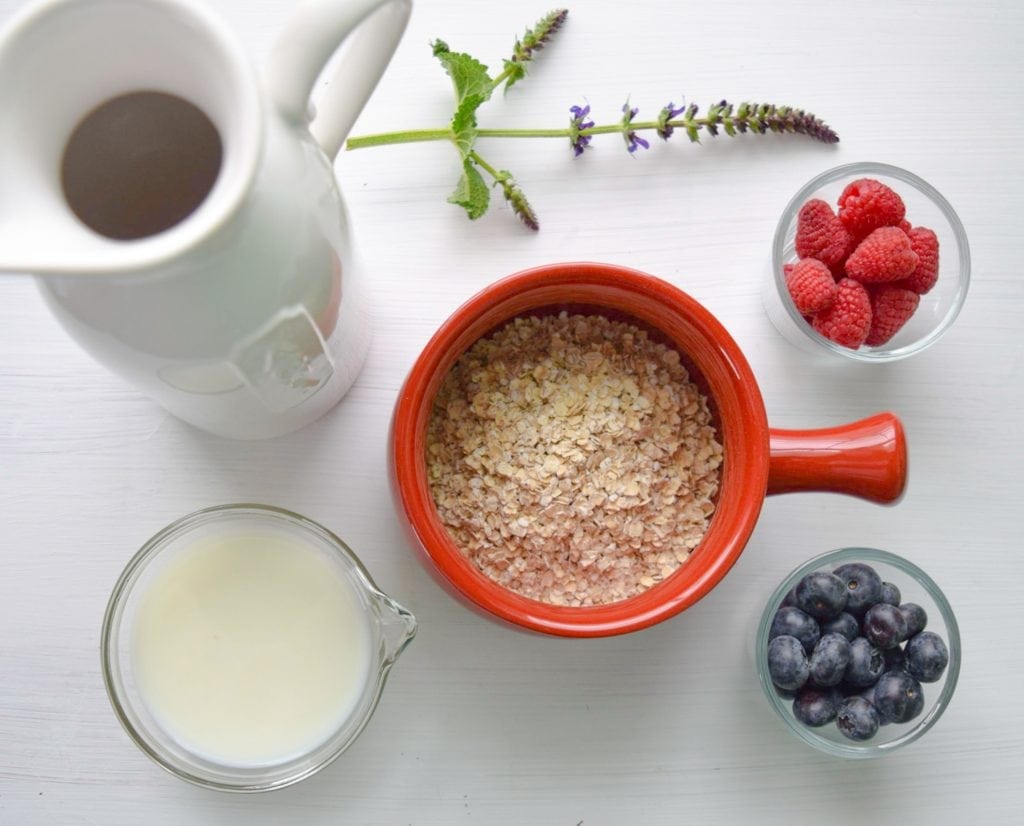What Are FODMAPs? What You Need to Know About This Gut-Friendly Diet
Let’s talk about our guts.
Bloating. Gas. Constipation. Diarrhea. Acid reflux. These are definitely no fun. Whether you suffer from Irritable Bowel Syndrome (IBS) or have random attacks of these symptoms, they can really wreck your day. You may have heard about a “low FODMAP” diet being prescribed to help relieve these symptoms. This isn’t your typical diet, though. aSweatLife is here to break it down to the basics so you can find out if it’s right for you.

What are FODMAPs?
FODMAPs is an acronym that was coined by Australian researchers at Monash University to describe a group of short-chain carbohydrates (think fibers and sugars) that they theorized were triggering symptoms of IBS in individuals. These short-chain carbohydrates are poorly absorbed by the small intestine, are very osmotic (draws water into the intestines) and are rapidly fermented by bacteria in the gut, causing all those things that don’t make the gut feel too nice – bloating, gas, diarrhea. These types of carbs are commonly found in our diets in a variety of foods.
The FODMAPs acronym helps identify these carbohydrates:
Fermentable
Oligosaccharides
Disaccharides
Monosaccharides
and
Polyols
Are you saying to yourself, “Hang on now, oligo-what?” Let’s break down what each of these FODMAPs are:
-
Fermentable: Bacteria in our gut process carbohydrates for energy via the process of fermentation. You can think of this process similar to the fermentation that turns grain into beer and fruit juice into wine. The process releases gas as a by-product. FODMAPs are short-chain carbohydrates, so they are more rapidly fermented than other longer chain carbohydrates in the large intestine, leading more quickly to gas and bloating.
- Oligosaccharides: These are fructans and galactans, which are found in foods such as wheat products, onion, garlic, legumes (beans, lentils, chickpeas), broccoli, Brussels sprouts and soy-based products. Humans lack the enzymes needed to digest these types of carbohydrates which can cause symptoms in some people.
- Disaccharides: The main one is lactose, which is found in milk and some dairy products such as yogurt, ice cream and soft cheeses (ricotta, cottage cheese). This carbohydrate needs the enzyme lactase in order to be digested, which some people lack due to genetics, race or gut disorders.
- Monosaccharides: The monosaccharide fructose is a simple sugar found in fruits. Fructose is easier to absorb when it’s combined with glucose, which is another type of sugar. Some fruits have higher amounts of fructose than glucose, causing malabsorption in some people (those with IBS). These fruits include apples, watermelon, mangoes, and pears. Other foods that are high in fructose are sugar snap peas, asparagus, honey, agave and (the name gives it away) high fructose corn syrup.
- Polyols: These are sugar alcohols found in foods such as cauliflower, mushrooms, stone fruits (apricots, peaches, nectarines, cherries, avocados) and the sugar substitutes sorbitol, mannitol, xylitol (found in many sugar-free or low-sugar items such as gum and ice cream alternatives). Sugar alcohols are very slowly digested by the intestines, usually not absorbing completely, which can trigger problems such as gas and bloating.
The Low FODMAP Diet
Monash University developed the Low FODMAP diet to help provide relief to those suffering from IBS, and some research has shown positive results in reducing these debilitating symptoms. A low FODMAP diet involves a period of time (anywhere from about 2-8 weeks) in which foods containing these short-chain carbohydrates are restricted and then gradually reintroduced. Gut symptoms are closely monitored and recorded to track patterns of triggering foods.
So who would benefit from a low FODMAP diet? According to Registered Dietitian and FODMAP expert Paula Gallagher, RD, LD, of The Gutsy RD (@thegutsyrd), a low FODMAP diet may help treat a person diagnosed with Irritable Bowel Syndrome (IBS) or a person who experiences similar symptoms such as gas, bloating, constipation or diarrhea.
Gallagher works with people who are diagnosed with IBS or suffer from these symptoms and are looking for relief. She says she is “continually pleasantly surprised by the amount of success my patients have with the low FODMAP diet. Although the diet is relatively strict, patients find that as they begin to feel better on the diet they have more motivation to continue. I have seen great success in many patients, and once even had a patient tell me that they were feeling better than they had in the last decade.”
What should you consider before trying this diet?
If you are experiencing persistent digestive problems, you should first consult with your doctor to rule out certain disorders such as celiac disease, food allergies and intolerances. Then, work with a registered dietitian in your area that can help you follow the low FODMAP diet and tailor it to your individual needs. Even better, find a dietitian that specializes in gut disorders and FODMAPs.
The low FODMAP diet is somewhat restrictive since it takes out many different types of foods, especially ones that provide great nutrition to the body. Cutting some of these foods out could lead to vitamin and mineral deficiencies. As an elimination diet, it is best practiced under the supervision of a dietitian.
What are some resources to learn more about the low FODMAP diet?
Monash University developed an app that can be used to track IBS symptoms and identify foods high or low in FODMAPs, as well as a low FODMAP guide and blog with recipes. You can find some great printable FODMAP food checklists from Kate Scarlata, registered dietitian, FODMAP and IBS expert, plus some delicious recipes and tips.
Or try out one of Paula’s simple low FODMAP snack ideas: “My favorite snack is either rice cakes with peanut butter and ¼ of a sliced banana or lactose-free yogurt with ¼ cup of blueberries and 1 Tbsp. of walnuts.”












